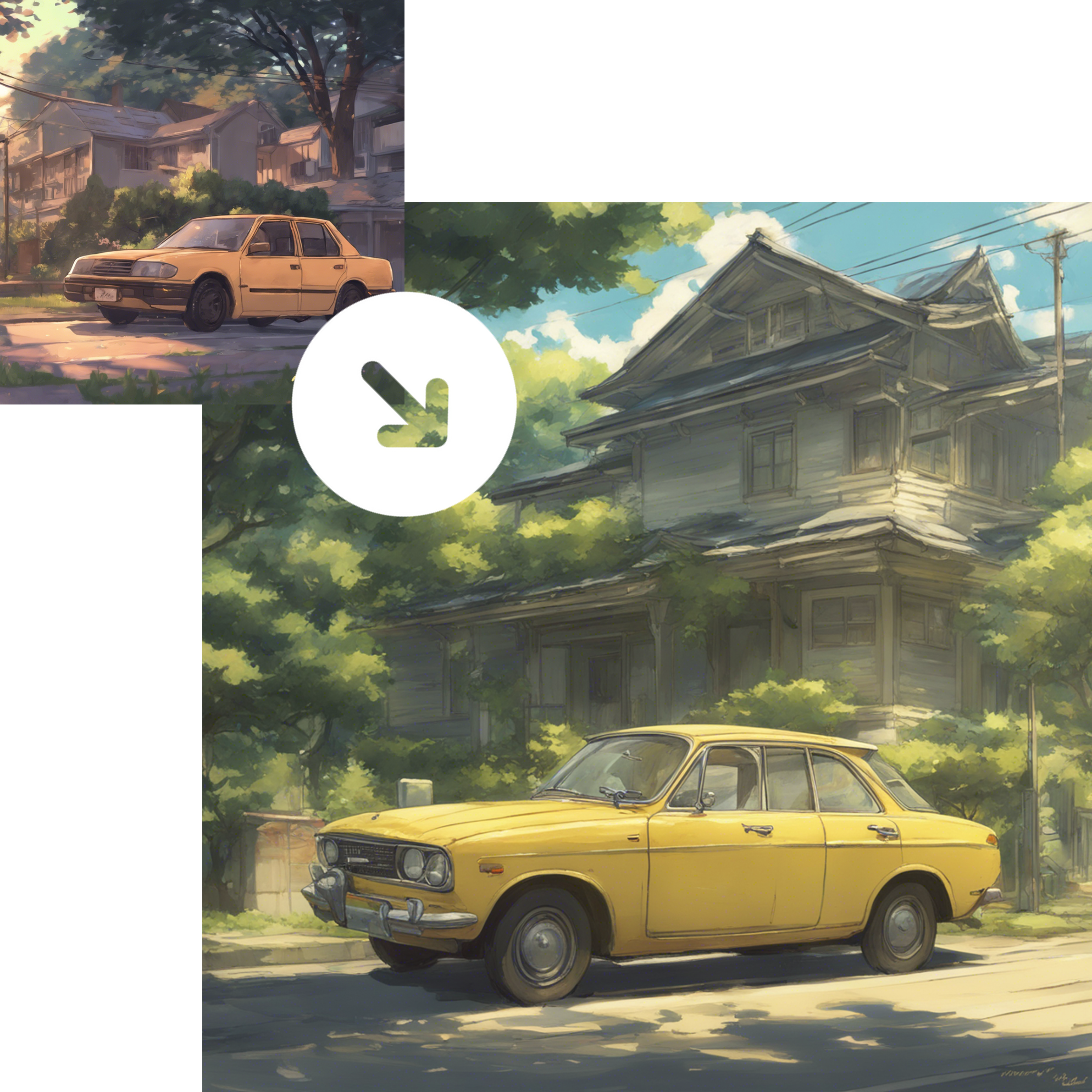clip-interrogator
Maintainer: pharmapsychotic

2.3K

| Property | Value |
|---|---|
| Run this model | Run on Replicate |
| API spec | View on Replicate |
| Github link | View on Github |
| Paper link | No paper link provided |
Create account to get full access
Model overview
The clip-interrogator is a prompt engineering tool that combines OpenAI's CLIP and Salesforce's BLIP to optimize text prompts to match a given image. It can be used with text-to-image models like Stable Diffusion to create cool art. Similar models include the CLIP Interrogator (for faster inference), the @pharmapsychotic's CLIP-Interrogator, but 3x faster and more accurate. Specialized on SDXL, and the BLIP model from Salesforce.
Model inputs and outputs
The clip-interrogator takes an image as input and generates an optimized text prompt to describe the image. This can then be used with text-to-image models like Stable Diffusion to create new images.
Inputs
- Image: The input image to analyze and generate a prompt for.
- CLIP model name: The specific CLIP model to use, which affects the quality and speed of the prompt generation.
Outputs
- Optimized text prompt: The generated text prompt that best describes the input image.
Capabilities
The clip-interrogator is able to generate high-quality, descriptive text prompts that capture the key elements of an input image. This can be very useful when trying to create new images with text-to-image models, as it can help you find the right prompt to generate the desired result.
What can I use it for?
You can use the clip-interrogator to generate prompts for use with text-to-image models like Stable Diffusion to create unique and interesting artwork. The optimized prompts can help you achieve better results than manually crafting prompts yourself.
Things to try
Try using the clip-interrogator with different input images and observe how the generated prompts capture the key details and elements of each image. Experiment with different CLIP model configurations to see how it affects the quality and speed of the prompt generation.
This summary was produced with help from an AI and may contain inaccuracies - check out the links to read the original source documents!
Related Models

clip-interrogator

118
clip-interrogator is an AI model developed by Replicate user lucataco. It is an implementation of the pharmapsychotic/clip-interrogator model, which uses the CLIP (Contrastive Language-Image Pretraining) technique for faster inference. This model is similar to other CLIP-based models like clip-interrogator-turbo and ssd-lora-inference, which are also developed by lucataco and focus on improving CLIP-based image understanding and generation. Model inputs and outputs The clip-interrogator model takes an image as input and generates a description or caption for that image. The model can operate in different modes, with the "best" mode taking 10-20 seconds and the "fast" mode taking 1-2 seconds. Users can also choose different CLIP model variants, such as ViT-L, ViT-H, or ViT-bigG, depending on their specific needs. Inputs Image**: The input image to be analyzed and described. Mode**: The mode to use for the CLIP model, either "best" or "fast". CLIP Model Name**: The specific CLIP model variant to use, such as ViT-L, ViT-H, or ViT-bigG. Outputs Output**: The generated description or caption for the input image. Capabilities The clip-interrogator model is capable of generating detailed and accurate descriptions of input images. It can understand the contents of an image, including objects, scenes, and activities, and then generate a textual description that captures the key elements. This can be useful for a variety of applications, such as image captioning, visual question answering, and content moderation. What can I use it for? The clip-interrogator model can be used in a wide range of applications that require understanding and describing visual content. For example, it could be used in image search engines to provide more accurate and relevant search results, or in social media platforms to automatically generate captions for user-uploaded images. Additionally, the model could be used in accessibility applications to provide image descriptions for users with visual impairments. Things to try One interesting thing to try with the clip-interrogator model is to experiment with the different CLIP model variants and compare their performance on specific types of images. For example, the ViT-H model may be better suited for complex or high-resolution images, while the ViT-L model may be more efficient for simpler or lower-resolution images. Users can also try combining the clip-interrogator model with other AI models, such as ProteusV0.1 or ProteusV0.2, to explore more advanced image understanding and generation capabilities.
Updated Invalid Date

sdxl-clip-interrogator

842
The sdxl-clip-interrogator model is an implementation of the clip-interrogator model developed by pharmapsychotic, optimized for use with the SDXL text-to-image generation model. The model is designed to help users generate text prompts that accurately match a given image, by using the CLIP (Contrastive Language-Image Pre-training) model to optimize the prompt. This can be particularly useful when working with SDXL, as it can help users create more effective prompts for generating high-quality images. The sdxl-clip-interrogator model is similar to other CLIP-based prompt optimization models, such as the clip-interrogator and clip-interrogator-turbo models. However, it is specifically optimized for use with the SDXL model, which is a powerful text-to-image generation model developed by lucataco. Model inputs and outputs The sdxl-clip-interrogator model takes a single input, which is an image. The model then generates a text prompt that best describes the contents of the input image. Inputs Image**: The input image to be analyzed. Outputs Output**: The generated text prompt that best describes the contents of the input image. Capabilities The sdxl-clip-interrogator model is capable of generating text prompts that accurately capture the contents of a given image. This can be particularly useful when working with the SDXL text-to-image generation model, as it can help users create more effective prompts for generating high-quality images. What can I use it for? The sdxl-clip-interrogator model can be used in a variety of applications, such as: Image-to-text generation**: The model can be used to generate text descriptions of images, which can be useful for tasks such as image captioning or image retrieval. Text-to-image generation**: The model can be used to generate text prompts that are optimized for use with the SDXL text-to-image generation model, which can help users create more effective and realistic images. Image analysis and understanding**: The model can be used to analyze the contents of images and extract relevant information, which can be useful for tasks such as object detection or scene understanding. Things to try One interesting thing to try with the sdxl-clip-interrogator model is to experiment with different input images and see how the generated text prompts vary. You can also try using the generated prompts with the SDXL model to see how the resulting images compare to those generated using manually crafted prompts.
Updated Invalid Date

clip-interrogator-turbo

658
clip-interrogator-turbo is a specialized version of the CLIP-Interrogator model, developed by @pharmapsychotic. It is 3x faster and more accurate than the original, with a focus on the SDXL dataset. This model can be seen as an enhancement to the core CLIP-Interrogator capabilities, providing improved performance and efficiency. Similar models include rembg-enhance, a background removal model enhanced with ViTMatte, and whisperx, an accelerated transcription model with word-level timestamps and diarization. Model inputs and outputs clip-interrogator-turbo takes an input image and extracts a prompt that describes the visual content. The model offers three modes of operation - "turbo", "fast", and "best" - which provide different tradeoffs between speed and accuracy. Users can also choose to extract only the style part of the prompt, rather than the full description. Inputs Image**: The input image to be analyzed Outputs Text prompt**: A text description of the visual content of the input image Capabilities clip-interrogator-turbo can generate highly accurate and detailed text prompts that capture the key elements of an input image, including objects, scene composition, and stylistic attributes. This can be particularly useful for tasks like image captioning, visual search, and prompting text-to-image models like Stable Diffusion or DALLE-2. What can I use it for? The clip-interrogator-turbo model can be integrated into a variety of applications and workflows, such as: Content generation**: Automatically generating detailed image descriptions for use in text-to-image models, social media, or marketing materials. Visual search**: Enabling visual search functionality by extracting descriptive text prompts from images. Image annotation**: Labeling and tagging images with high-quality textual descriptions. Data augmentation**: Generating additional training data for computer vision models by pairing images with their corresponding text prompts. Things to try One interesting aspect of clip-interrogator-turbo is its ability to focus on the stylistic elements of an image, in addition to its content. This can be particularly useful when working with artistic or creative imagery, as the model can help capture the unique visual style and aesthetic qualities of an image. Additionally, the model's speed and accuracy enhancements make it a powerful tool for real-time applications or high-throughput workflows.
Updated Invalid Date

img2prompt

2.6K
img2prompt is a tool developed by methexis-inc that can generate an approximate text prompt, including style, that matches a given image. It is optimized for use with the Stable Diffusion text-to-image diffusion model. img2prompt leverages OpenAI's CLIP and Salesforce's BLIP to analyze the content and style of an image and produce a prompt that can recreate it. Similar models include the CLIP Interrogator, which uses CLIP and BLIP to optimize text prompts for Stable Diffusion, and the Text2Image Prompt Generator, which can autocomplete prompts for any text-to-image model. Model inputs and outputs Inputs Image**: The input image for which to generate a matching text prompt. Outputs Output**: A text prompt that can be used to recreate the input image using a text-to-image model like Stable Diffusion. Capabilities img2prompt can take an image as input and generate a text prompt that captures the content, style, and other key attributes of the image. This can be useful for quickly generating prompts to use with Stable Diffusion or other text-to-image models, without having to manually craft a detailed prompt. What can I use it for? img2prompt can be a valuable tool for artists, designers, and content creators who want to generate images similar to a provided reference. By using the generated prompt with Stable Diffusion or a similar model, users can create new, unique images that maintain the style and content of the original. This can be especially useful for exploring ideas, generating variations on a theme, or quickly prototyping new concepts. Things to try Try providing img2prompt with a variety of images, from realistic photographs to abstract digital art, and see how the generated prompts differ. Experiment with using the prompts in Stable Diffusion to see how the model interprets and renders the content. You can also try combining the img2prompt output with other prompt engineering techniques to further refine and customize the generated images.
Updated Invalid Date